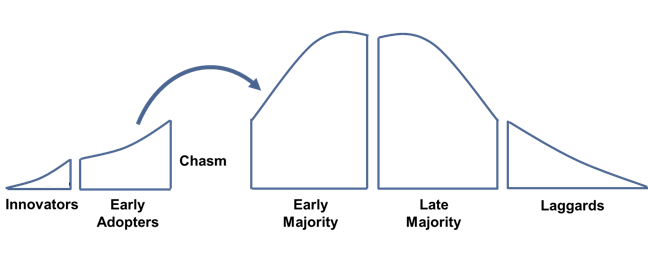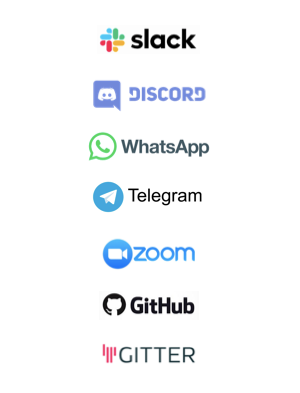Five ways to jumpstart the Community-led Growth engine in your Company
My previous post on Community-led Growth (CLG) was one of the most read posts on the blog 🙏. Many founders and growth marketeers reached…

Five steps to jumpstart the Community-led Growth engine in your Company
My previous post on Community-led Growth (CLG) was one of the most read posts on the blog 🙏. Many founders and growth marketeers reached out to discuss, share their opinions and ask questions. As I went through these conversations, I realised that there are lot of unanswered questions on the topic, the most common of them being “How do I replicate this within my product/company?”. So I decided to list five simple questions you need to answer to be able to initiate Community-led Growth within your company and I call this the 5-C framework.
Step 1: What is going to be the Core of the community?
As I mentioned in my previous post, what distinguishes a community from a network is the common interest or goal that aligns the community, where members want to benefit from as well as contribute back.
To be able to incite this contribution you have to unearth what will the members really care about i.e. the Core. Remember to keep the Core niche enough to attract the right interest!

As an example, our portfolio company Hasura built its community around GraphQL, and not backend development. It was a niche enough topic, that developers looking for content or help on GraphQL reached out to this community for. And there are very active members who want GraphQL to develop into a default protocol for backend-frontend middleware, who actively contribute back to this community.
Step 2: What is the right Channel to use?
Once you have figured out the Core of your community, you need to understand what’s the right Channel to bring your community together on. This feels like an easier question to answer, just think where your potential members of community are usually active, and use that as a Channel.
A rookie mistake though is to limit this to your own website. If you don’t already have high active engagement on your website (how will you if you never formed a community?) then this is a bad idea.

An easy question to answer here is whether you need community contributions to be asynchronous or synchronous.
Another thing to keep in mind is that the contributions, deliberations, debates within the community should be easily discoverable by members outside the community. Frankly, this part is not yet solved in most of the platforms above unless you use forums-based tools.
Step 3: Who will be the early Contributors?
Once you have figured out the right Channel, it is time to think about the early Contributors. If you have the Core right, finding early engaged members for the community should not be hard. But what is hardest is to find members who will contribute back.
As a result, you have to start parsing carefully through your early community members to find those who are highly engaged, have a lot of energy, are not bogged down by too many other engagements, and are willing to co-create this community with you.
You also have to figure out, what’s the optimum size of your initial community? The answer to this is a bit unclear, as not many successful examples exist, but in my experience I have noticed that 10–20 initial engaged nodes are enough to get the community rolling to a few hundreds of people in a short span of time. My intuition says this is due to the 3 degrees of separation that usually exists between common interest group of individuals, resulting in 20 members compounding to hundreds/thousands in a short span of time.
Most communities during their scaling journey do need to cross the chasm, so be prepared to to push the community beyond the tipping point by having a sizeable initial audience. Too large, and members don’t find meaningful connections. Too small, and members don’t find meaningful content.
Step 4: Who will Coordinate all the efforts?
Once you have your early Contributors onboarded on their preferred platform, it’s time to seed the community. Of course the initial Contributors will start doing this, but you need Coordinators, a few individuals who orchestrates the discussions on the community. These are usually your own team members, because they know which direction to take this community towards, but can also include some close associations within the community.
In my experience, there should be at least one founder involved in the Coordination efforts in the early days.
Some times this might take up to 30–50% of the senior management’s time, but you’ll find the invested effort showing ROI in relatively short-term compared to Content and other such marketing initiatives.
Step 5: How do you maintain Consistency?
As you start seeing some green shoots of success, you have to ensure that the Community doesn’t spiral into the death valley. Often, members join in with high expectations, get disappointed with the content or community engagement, and leave, likely to never come back. This is where Consistency becomes a key for sustainability. You need to ensure that the community starts flourishing organically. What topics will seed discussions and collaboration? Pay close attention to what initiates healthy debates in the community, those are important topics to keep talking about.
As an example, if you are using Slack, you can build channels to sub-categorize a lot of conversations that start bubbling up naturally in the community.
This requires concerted effort from the community managers, calendaring an inorganic schedule of content, but also jumping on any organic opportunities to build engagement. As you put in this effort, also start asking yourself —
How can you make yourself redundant and let the community flourish organically?
And there you have it. The 5-C framework to jumpstart your CLG — Core, Channel, Contributors, Coordination, Consistency together all of them yielding a nice bubbling cauldron of Community.
I know it sounds easy. I also know from experience that it is very difficult to execute, so all the very best on your Community efforts. If you have any other requests of content I should write around CLG, or if you have any questions on the same, feel free to message/DM on LinkedIn.
